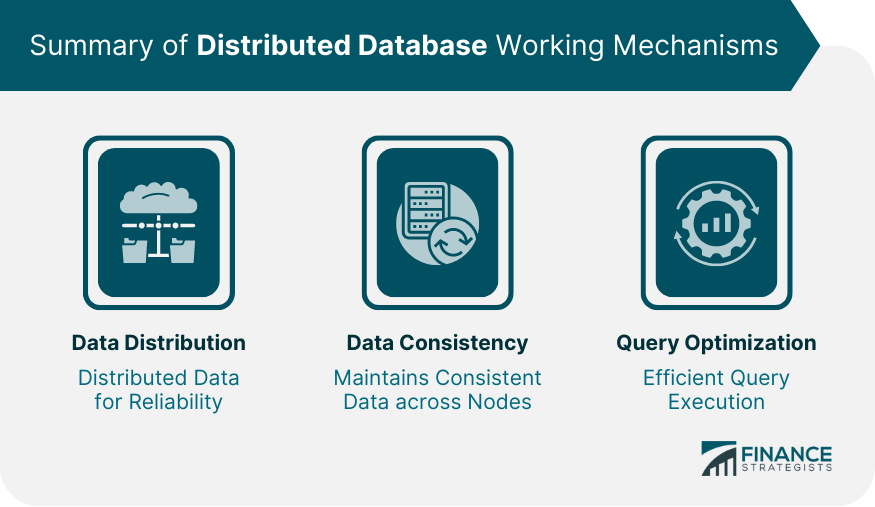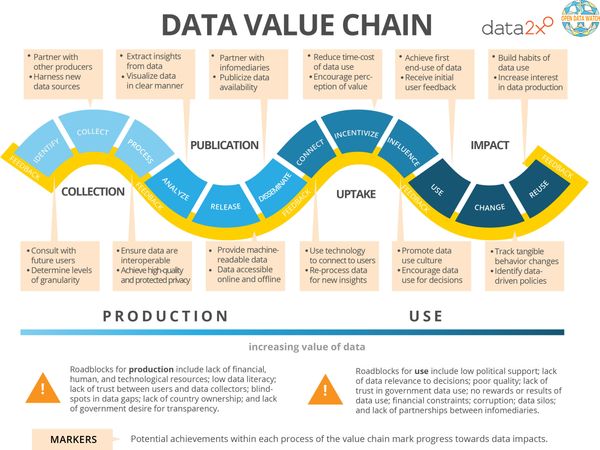Overview
What is query optimization?
Query optimization is a crucial aspect of efficient database management. It involves the process of selecting the most optimal execution plan for a given query, ensuring that the query is executed in the most efficient way possible. By analyzing various factors such as table sizes, indexes, and available resources, query optimization aims to minimize the response time and resource consumption of database queries. This results in improved performance and scalability of the database system, ultimately leading to enhanced user experience and reduced costs.
Importance of query optimization
Query optimization is a crucial aspect of database management systems, especially in the case of MySQL. It plays a vital role in enhancing the performance and efficiency of queries executed on the database. By optimizing queries, database administrators can significantly reduce the response time of queries, leading to faster data retrieval and improved user experience. Additionally, query optimization helps in reducing resource usage, such as CPU and memory, resulting in better scalability and cost-effectiveness. Therefore, understanding the importance of query optimization is essential for developers and administrators working with MySQL databases.
How query optimization works
Query optimization is a crucial aspect of improving database performance. It involves the process of selecting the most efficient execution plan for a given query. By analyzing the structure of the query and the available indexes, the MySQL optimizer determines the best way to retrieve and manipulate the data. This optimization process aims to minimize the query execution time and resource utilization, resulting in faster and more efficient database operations.
Understanding the Query Execution Plan

What is a query execution plan?
A query execution plan is a roadmap that MySQL uses to execute a query efficiently. It outlines the steps that MySQL takes to retrieve the requested data from the database. By analyzing the query execution plan, developers and database administrators can gain insights into how MySQL processes the query and identify any potential bottlenecks or areas for optimization. Understanding the query execution plan is crucial for optimizing query performance and improving the overall efficiency of the database system. It allows developers to make informed decisions about indexing, query structure, and other factors that impact query execution. Furthermore, the query execution plan plays a vital role in supporting concurrent users, ensuring that multiple users can access and retrieve data from the database simultaneously without conflicts or performance degradation.
Components of a query execution plan
A query execution plan is a blueprint that outlines how MySQL executes a query. It consists of several components that work together to efficiently retrieve and process data. These components include the query optimizer, the query executor, and the storage engine. The query optimizer is responsible for analyzing the query and generating an optimal execution plan. It considers factors such as indexes, statistics, and cost-based optimization techniques to determine the best way to retrieve the requested data. The query executor is responsible for executing the plan generated by the optimizer. It retrieves data from the storage engine and performs any necessary operations, such as sorting or joining, to produce the final result set. The storage engine is responsible for storing and retrieving data from disk or memory. It manages data files, indexes, and caches to ensure efficient data access. Overall, understanding the components of a query execution plan is crucial for optimizing query performance in MySQL.
How to interpret a query execution plan
A query execution plan provides a detailed roadmap for how MySQL executes a query. It outlines the steps and operations involved in retrieving and processing the data requested by the query. Understanding how to interpret a query execution plan is crucial for optimizing query performance. By analyzing the plan, you can identify potential bottlenecks, optimize the query structure, and make informed decisions about indexing and query tuning. Key elements to look for in a query execution plan include the order of operations, the use of indexes, the estimated number of rows, and the join algorithms used. By carefully examining these elements, you can gain insights into the efficiency and effectiveness of your queries and make necessary adjustments for improved performance.
Query Optimization Techniques
Indexing
Indexing is a crucial aspect of query optimization in MySQL. It plays a significant role in improving the performance of database queries by allowing faster data retrieval. By creating indexes on specific columns, MySQL can quickly locate the required data without scanning the entire table. This leads to reduced query execution time and improved overall efficiency. Additionally, indexing also helps in sorting and grouping data efficiently, which further enhances the query performance. Therefore, understanding the importance of data governance and implementing proper indexing techniques is essential for optimizing query performance in MySQL.
Join optimization
Join optimization is an essential aspect of query optimization in MySQL. It involves optimizing the process of joining tables in a query to improve performance and efficiency. By carefully selecting the join order, using appropriate join algorithms, and considering the available indexes, MySQL can execute queries faster and reduce the overall execution time. Join optimization plays a crucial role in improving the response time of complex queries with multiple tables. It ensures that the database engine efficiently retrieves the necessary data and minimizes the need for unnecessary disk I/O operations. Understanding join optimization is crucial for database administrators and developers to optimize their queries and improve the overall performance of their MySQL databases.
Subquery optimization
In the realm of query optimization, one important aspect to consider is subquery optimization. Subqueries are queries that are embedded within the main query and are used to retrieve intermediate results. These subqueries can have a significant impact on the overall performance of a query. MySQL, being a popular relational database management system, provides various techniques for optimizing subqueries to improve query execution time and resource utilization. By understanding the intricacies of subquery optimization, database administrators and developers can fine-tune their queries to achieve better performance.
Cost-Based Optimization

What is cost-based optimization?
Cost-based optimization is a crucial aspect of database performance tuning. It involves analyzing the various execution plans for a given query and selecting the one with the lowest cost. By considering factors such as index usage, join order, and data access methods, cost-based optimization aims to minimize the time and resources required to execute a query. This process plays a vital role in improving query performance and overall database efficiency.
Factors considered in cost-based optimization
In cost-based optimization, there are several factors that are considered when determining the best query execution plan. These factors include the selectivity of the predicates, the availability of indexes, the join order, and the cost of accessing data. Selectivity refers to the percentage of rows that satisfy a given predicate, and it is used to estimate the number of rows that will be returned by a query. Indexes can improve the performance of queries by allowing for faster data retrieval. The join order determines the order in which tables are joined, and it can impact the efficiency of the query. Finally, the cost of accessing data takes into account factors such as disk I/O and CPU usage. By considering these factors, the cost-based optimizer can determine the most efficient way to execute a query.
How cost-based optimization improves query performance
Query optimization is a crucial aspect of database management systems. It involves finding the most efficient execution plan for a given query, in order to improve overall performance. One popular approach to query optimization is cost-based optimization, which uses statistical information about the data and the database system to estimate the cost of different execution plans. By considering the cost of different plans, the optimizer can choose the plan that is expected to have the lowest cost and therefore the highest performance. This approach is particularly effective in optimizing Oracle database performance, as it takes into account factors such as index selectivity, join cardinality, and data distribution. By leveraging cost-based optimization techniques, database administrators can significantly improve the performance of their Oracle databases, resulting in faster query execution and better overall system efficiency.
Common Performance Issues and Solutions

Slow queries
Slow queries in MySQL can significantly impact the performance of your database. These queries take longer to execute and can cause delays in retrieving data. It is important to identify and optimize slow queries to ensure efficient query execution. By analyzing query execution plans, indexing strategies, and query structure, you can identify the root cause of slow queries and take appropriate actions to improve performance. Monitoring tools and profiling techniques can also be used to track and analyze slow queries in real-time. By addressing slow queries, you can enhance the overall performance and responsiveness of your MySQL database.
High CPU usage
High CPU usage can be a common issue in MySQL databases. It can negatively impact the performance and responsiveness of the system. To address this problem, it is important to understand the factors that contribute to high CPU usage. One factor that can cause high CPU usage is inadequate hardware monitoring. Monitoring the hardware resources such as CPU usage, memory usage, and disk I/O can help identify any bottlenecks or resource-intensive queries that may be causing the high CPU usage. By monitoring the hardware effectively, database administrators can take necessary actions to optimize the query execution and improve overall system performance.
Inefficient index usage
Inefficient index usage is a common issue that can greatly impact the performance of a MySQL database. When indexes are not used efficiently, queries take longer to execute and the overall database performance suffers. To improve database performance, it is crucial to optimize the usage of indexes. By carefully analyzing query execution plans and identifying inefficient index usage, database administrators can make informed decisions to optimize the indexes and enhance query performance. This involves techniques such as creating appropriate indexes, removing redundant indexes, and using index hints when necessary. By improving database performance through efficient index usage, organizations can ensure faster query execution and better overall system performance.
Conclusion

Summary of query optimization in MySQL
Query optimization plays a crucial role in improving the performance of a database system. In MySQL, query optimization aims to find the most efficient execution plan for a given query. By analyzing the query and the available indexes, MySQL’s query optimizer determines the best way to retrieve and process the data. This process involves evaluating different access methods, join algorithms, and index usages to minimize the query execution time. The goal is to create a high-performing database that can handle large amounts of data and deliver fast query results.
Importance of optimizing queries
The importance of optimizing queries cannot be understated. Efficient query optimization is crucial for improving the performance and scalability of a database system. By optimizing queries, database administrators can significantly reduce the response time of queries, leading to faster data retrieval and improved user experience. Additionally, optimized queries can also minimize resource consumption, allowing the database to handle a larger number of concurrent requests without compromising performance. One important aspect of query optimization is the use of database views. Database views provide several benefits, such as improved data security, simplified data access, and enhanced query performance. By creating views, database administrators can abstract complex queries into simpler and more manageable structures, making it easier to optimize and maintain the database system. Furthermore, views can also improve data consistency by providing a unified and standardized representation of the underlying data. Overall, optimizing queries and leveraging the benefits of database views are essential for maximizing the efficiency and effectiveness of a MySQL database system.
Tips for improving query performance
Query optimization is a crucial aspect of improving the performance of database queries. When it comes to optimizing query performance in MySQL, there are several tips that can be followed. One important tip is to carefully analyze the query execution plan. The query execution plan provides insights into how MySQL will execute the query and helps identify potential bottlenecks or areas for optimization. By understanding the query execution plan, developers can make informed decisions on how to improve query performance. It is recommended to regularly review and optimize the query execution plan to ensure efficient and fast query processing.
In conclusion, OptimizDBA Database Optimization Consulting is the trusted industry leader in remote DBA services. With over 500 clients and a track record of delivering transaction speeds that are at least twice as fast as before, OptimizDBA guarantees a significant increase in performance. Our average speeds are often 100 times, 1000 times, or even higher! If you’re looking to optimize your database and experience unparalleled performance, contact OptimizDBA today. Visit our website to learn more about our services and how we can help you achieve optimal database performance.







